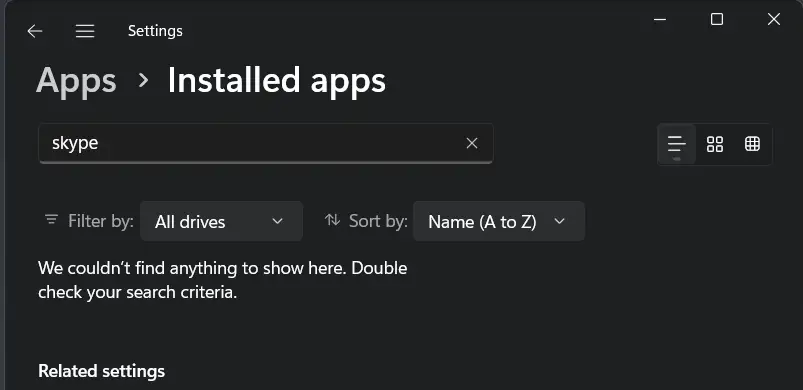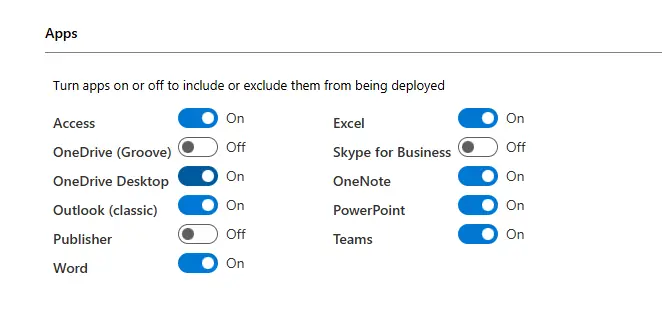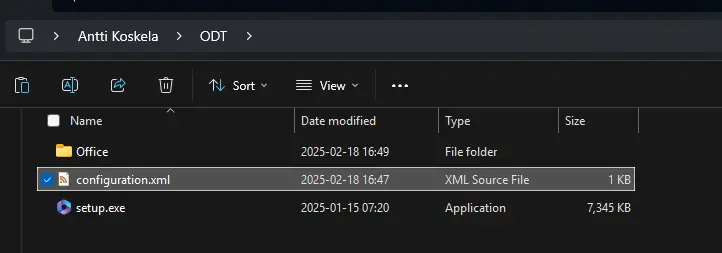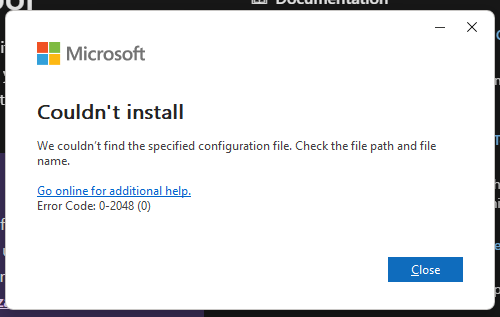This post was most recently updated on March 12th, 2025.
6 min read.This article explains how to uninstall Skype for Business when it’s not visible in your Control Panel, Settings, Installed apps or Programs and features.
This article also (accidentally) underlines the futility of using a separate uninstaller application. They’ll typically introduce more trouble than they’re worth.

According to Copilot, this is what it looks like.
But let’s get to it.
Background
Ooh, I’ve upgraded my topics from “look at me ma, I’m a project manager!” to “look at me ma, I’m a Microsoft 365 MVP now!”
As I should! Moving up in the knowledge worker skill tree. Min-maxing it, even.
Anyway. Let me share my knowledge on Skype removal with you!
A while ago, I had to reinstall my Windows 11 machine, as updating the Bluetooth driver (a task I wouldn’t have performed, but Windows Update pushed 24H2 to my laptop, thus breaking my Bluetooth connection(s)) caused an endless restart loop. In a span of just 10 minutes I saw more Blue Screens than I have seen in, well, at least 6 months (my last complete system wipe was about half a year ago, when some other Windows Update caused the machine to never recover).
Anyway. After this clean install of 24H2 (because that’s what Microsoft decided my new baseline is), my machine got Office (which is nice) with Skype for Business (which was weird).
Problem
Jump over to the “Solution” unless you want to read about my daily struggles with technology. Because I do have another one to share! But let’s start by talking about why Skype is a problem in the first place.
I don’t mind Skype for Business by itself, but I also haven’t used it for anything in 8 years. I don’t exactly need it. And I don’t really want it on my machine.
So I decided to remove it.
And like most Windows apps, you can easily do it by clicking “Uninstall” on “Skype for Business”:

Or can you?
Clicking this will take you to “Apps > Installed apps” under Control panel – which does NOT have Skype for Business in the list:

(it didn’t have “Lync.exe” either, in case you were wondering!)

And of course it isn’t visible in the “Classic” view of “Programs and apps” either.
That’s because Skype for Business is SNEAKY.
But I’ve been in this business long enough to see all kinds of tomfoolery. Apps come and go, and it’s not always pretty. This one has to go, even if I had to rip it out.
So I decided to use Revo Uninstaller to remove it.
Boy did that go wrong!
Revo Uninstaller helpfully recognized the Skype for Business client – lync.exe – as “Microsoft Teams Meeting Add-in for Microsoft Office“.
Lol.
At this point I figured this is probably going to be a disaster, but in the oddly captivating “slow-motion train wreck” style – this was turning into something that I just couldn’t bring myself to look away from.
So I clicked “Next”.

And Revo Uninstaller proceeded to helpfully do nothing at all. 😂
I didn’t notice any change in functionality after the Teams Meeting Add-in for Microsoft Office had been removed.

I guess Skype for Business is a really tough nut even for a professional, enterprise grade app uninstaller?
This train wreck ain’t going anywhere.
Anyway – of course there’s an actual solution to the issue.
Solution
Using Office Deployment Tool (from Microsoft), you can deploy your Office without Skype.
Yes – you’ll need to custom deploy your Office package, because by default it still comes with Skype for Business, somehow.
1. Download and extract ODT
Download the ODT tool from Microsoft: https://learn.microsoft.com/en-us/microsoft-365-apps/deploy/overview-office-deployment-tool
(Or a link to the download page: https://www.microsoft.com/en-us/download/details.aspx?id=49117)
You’ll see a lot of examples where ODT is downloaded to a path like C:\ODT or C:\ODT19. I can from my very limited experience tell you, that this isn’t a good idea. Download it to your user directory instead. Jump to “Troubleshooting” if you want to know more…
Then open an elevated command prompt / powershell / shell / terminal (elevated = as an administrator), into the directory where you extracted the ODT files.
cd C:\users\masterchief\ODTSo a nice and safe folder under your profile.
2. Modify the configuration xml
You can do this online – or if you’re on the same happy-go-lucky -release trainwreck as I am, just copy-paste what I have below.
In the online tool – called “Office Customization Tool” – you can remove apps like “Skype for Business”.
You can go here to find the configurator: https://config.office.com/deploymentsettings
You could also remove “OneDrive Desktop” – the modern OneDrive client application – and I can tell you I was tempted!

After clicking through the configuration – I got what’s below.
It worked for me, but your mileage may vary.
<Configuration ID="5a639e4c-885c-4a72-91cd-0c359973152c">
<Add OfficeClientEdition="64" Channel="Current">
<Product ID="O365ProPlusRetail">
<Language ID="en-us" />
<ExcludeApp ID="Groove" />
<ExcludeApp ID="Lync" />
<ExcludeApp ID="Publisher" />
</Product>
</Add>
<Updates Enabled="TRUE" />
<RemoveMSI />
<Display Level="Full" AcceptEULA="TRUE" />
</Configuration>Make sure the XML is in the same directory as setup.exe, and called something sensible – in my case, it’s configuration.xml.
(it was called wtf.xml for a while, since I had to rename it a few times when I was trying to figure out why setup.exe couldn’t locate it)
3. Download the installation files with setup.exe
It doesn’t matter whether you already have the whole package installed and just want to uninstall one small bit – you need to download the whole thing anyway.
It’ll be just a few gigs. A small price to pay to remove Skype, I guess.
Run this:
.\setup.exe /download configuration.xmlAnd you should get this:

And after you’re done, it should look like this:

4. Run setup.exe /customize
Now we’ll actually modify your deployment of Office.
Run the following (still assuming your .xml file is called configuration.xml and it’s in the same folder):
.\setup.exe /customize configuration.xmlIt should fire up the deployment tool again.

And after clicking Continue, it’ll only take a while..

And Skype for Business is gone!

Of course, trusting Windows Search is a fool’s errand (it’s still in the process of reindexing my files after the reinstall 2 weeks ago), but if Skype for Business doesn’t literally pop up after the next time Windows decides to restart itself, you’re probably good.
Further reading and References
Another Finnish MVP, Pavel Mirochnitchenko, ran into a similar problem. Him being an actual professional in unfucking Windows apps (my words, not his) meant that he started with PowerShell and Intune instead of Control Panel and Revo Uninstaller.
What a champ. I guess that’s how this should have been done.
I took some inspiration into the ODT configuration from his article (and the comments), even though I initially wanted to avoid it, and find some other way to remove the invading app – the last time I used ODT, it took hours to finish, during which the Office apps were not usable, and I foolishly thought there would be a more productive way to do it.
And well, there wasn’t, but at least ODT was really fast this time.
Troubleshooting
A couple of things that might go wrong and how to fix them.
What if running ODT setup.exe fails?
This might happen if you’re not running the terminal window as an admin, or your files are located outside your profile folder (no idea why it matters – there was nothing in the logs and the app isn’t exactly helpful either).

The “Go online for additional help.” link not working is a nice touch! It takes you to:
https://support.office.com/en-CA/client/results?&ns=OCSAC2RBootstrapper&version=16&omkt=en-CA&ver=16&helpid=%220-2048-0%22&app=webviewWhich looks like this:

Nice!
Anyway – move the whole ODT directory under your profile folder and CD to it.
But Microsoft says to move it to C:\ODT
Yes they do, for example here: https://answers.microsoft.com/en-us/msoffice/forum/all/office-offline-installer-does-not-work-we-couldnt/5dceed69-230b-4865-ac83-3f5b41373f29
But as they say: lie, bigger lie, statistics, documentation.
Move it under your profile folder. You’ll thank me later.
It’s still complaining it can’t load the xml file!
If instead of doing what I said (create a file called configuration.xml) you did what I did (modified the xml file that came with setup.exe), the xml file will be blocked.
Unblock it by clicking it with right mouse button -> properties -> unblock.
What if the ODT application doesn’t start when you run setup.exe /command something ?
It’s a flimsy basterd. Make sure you have run /download before other commands, and use /customize instead of /configure. Otherwise it’ll just act up or crash silently.
Why do you need to run the terminal as an administrator?
This app has been developed with the highest possible standard – “gib me admin or I will crash silently”.
In all honesty, you can install apps without admin permissions, so it would be great if you could also uninstall apps without admin permissions.
But here we are.
- How to Copy-Paste a Table from Excel to Microsoft Loop Without Losing Your Mind - April 8, 2025
- Clipboard History disabled – “This setting is managed by your organization?” | Easy fix! - April 1, 2025
- Windows Search not finding anything? That might be the default now, but you don’t need to accept it! - March 25, 2025



